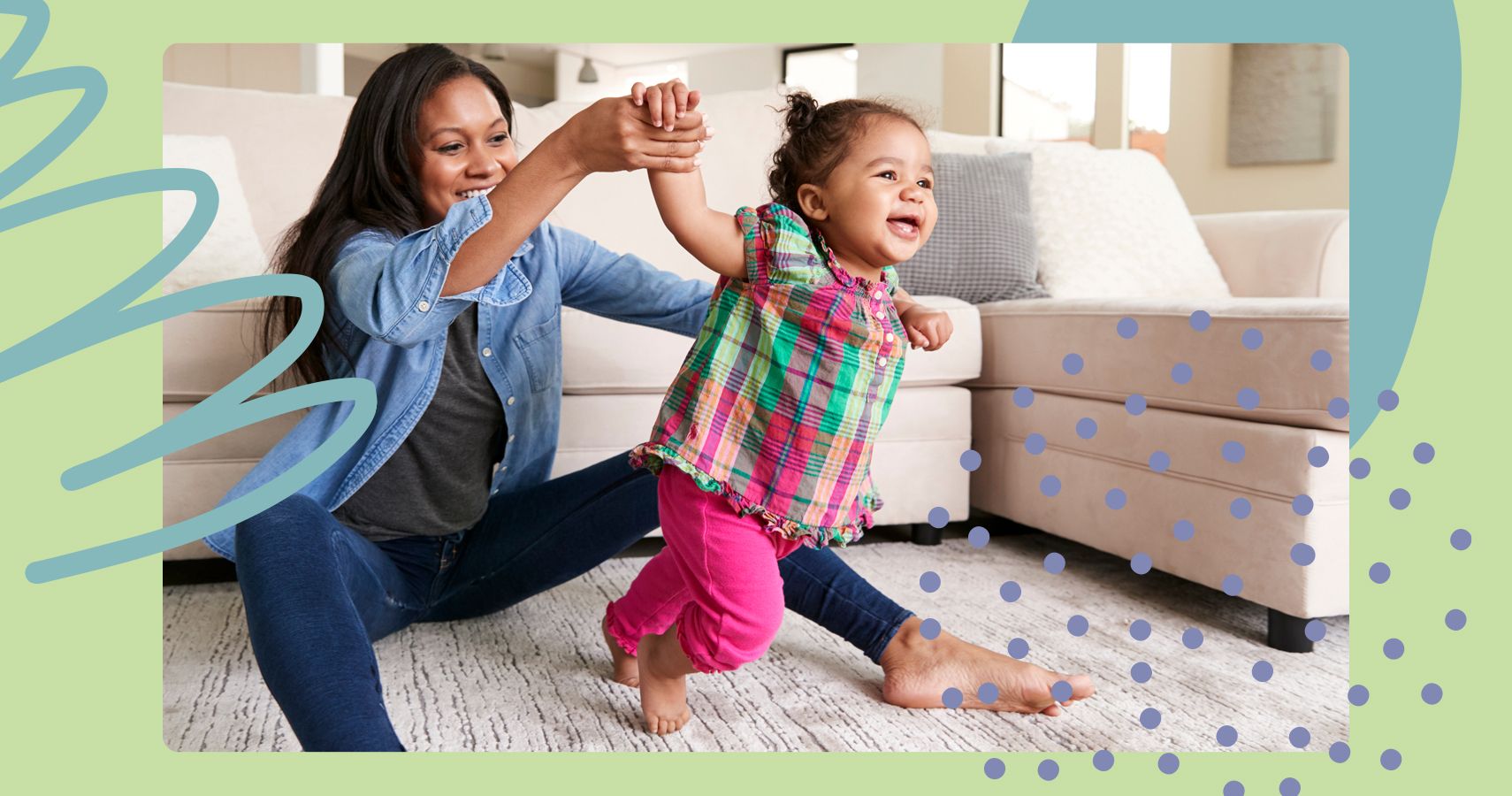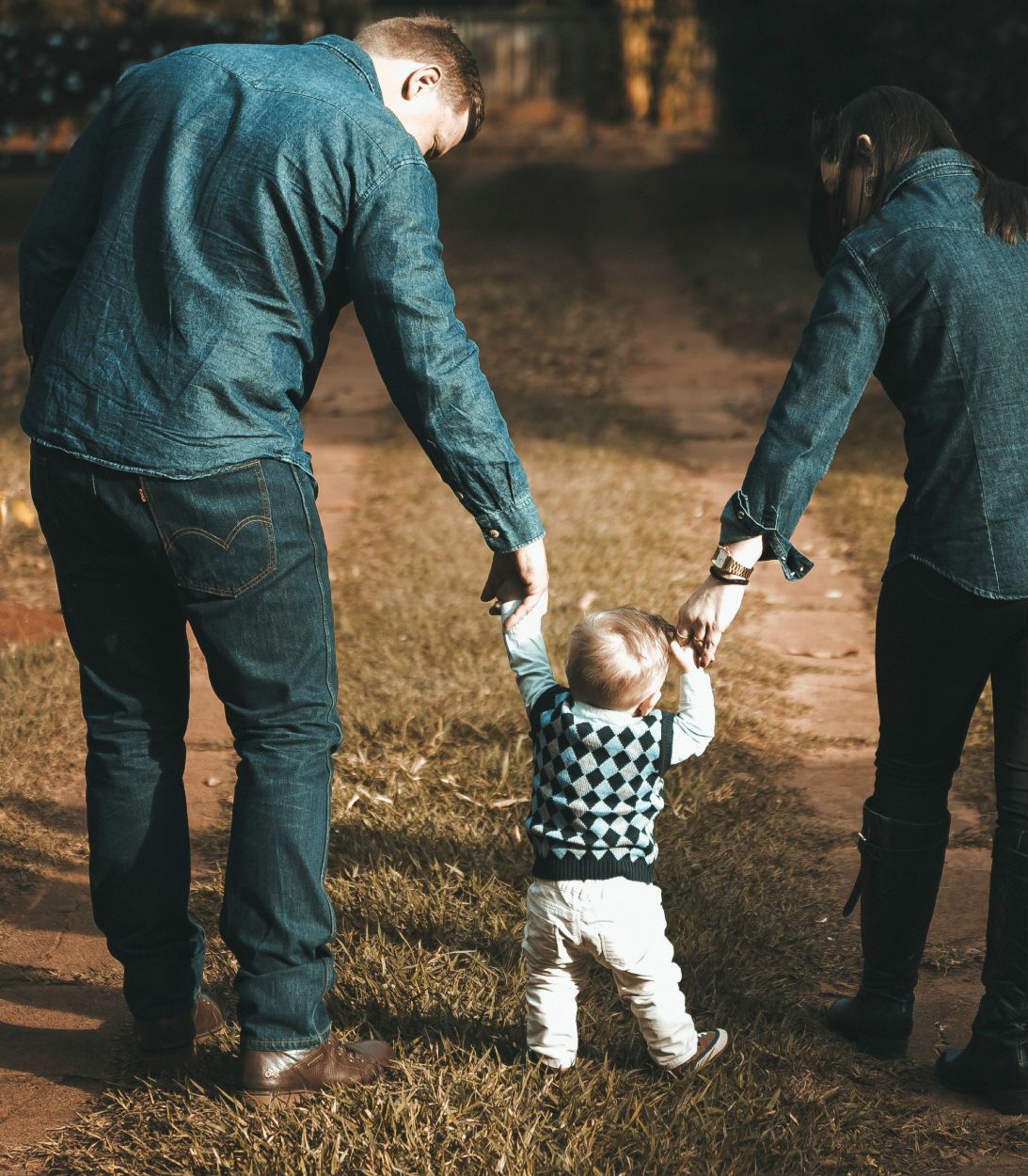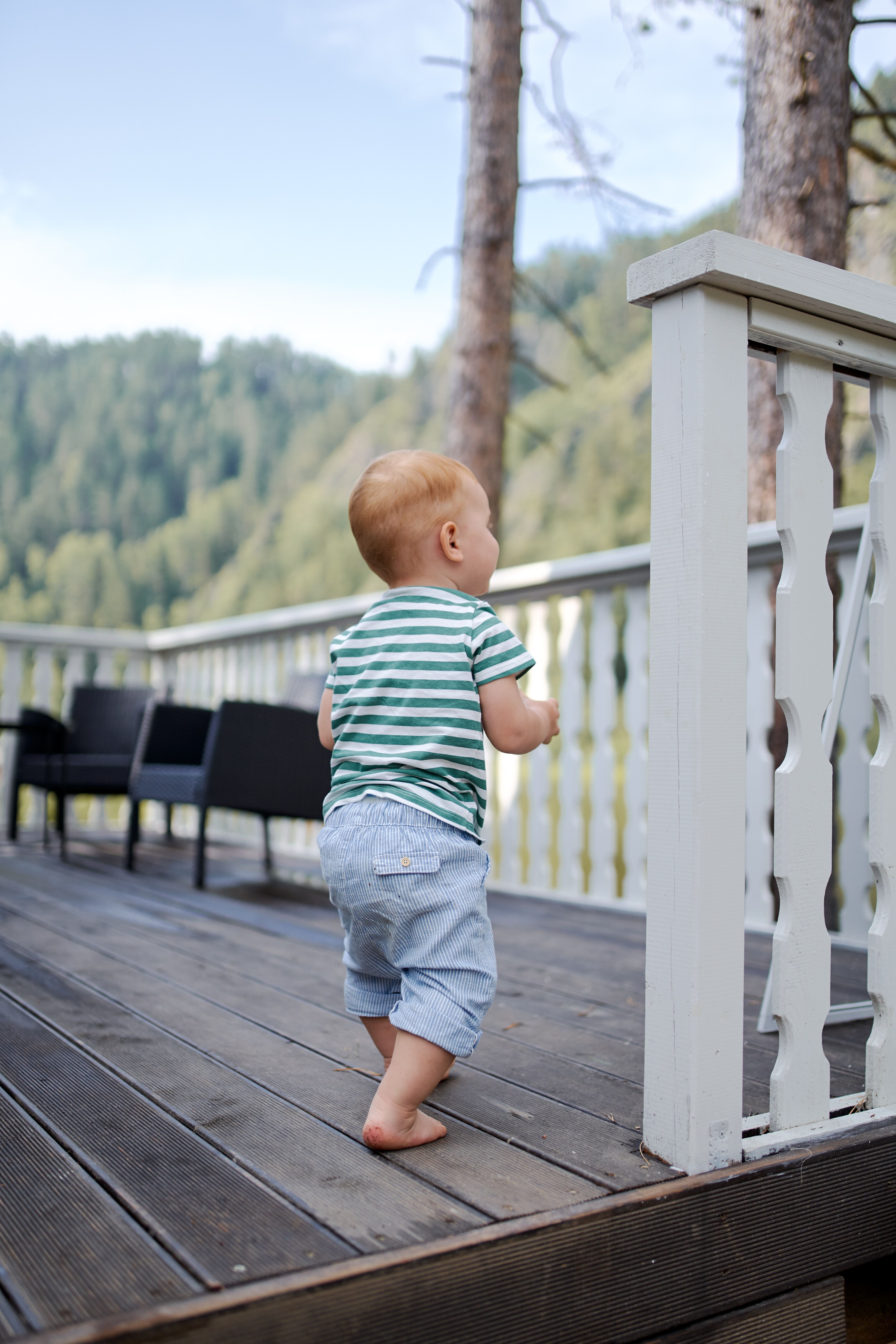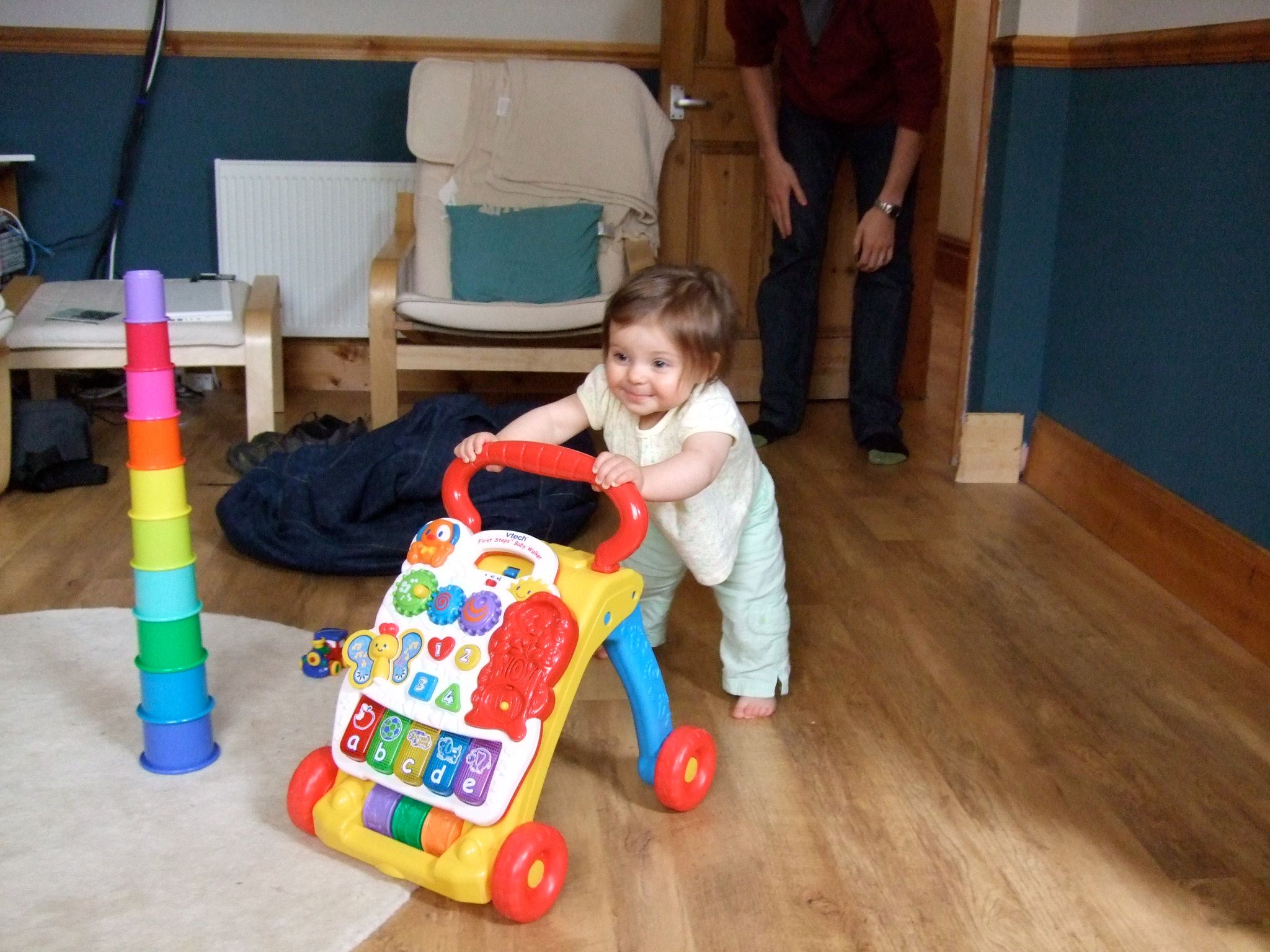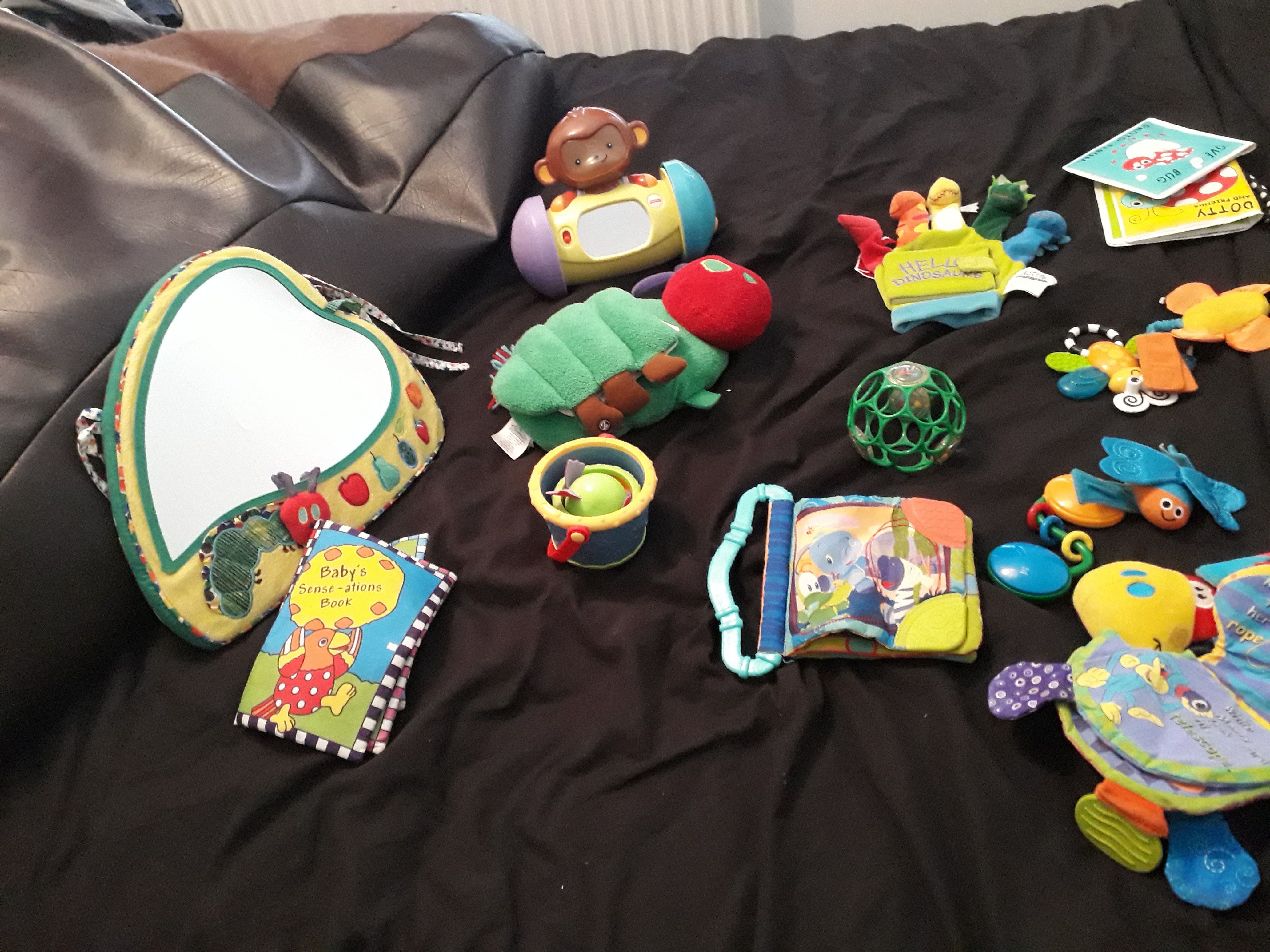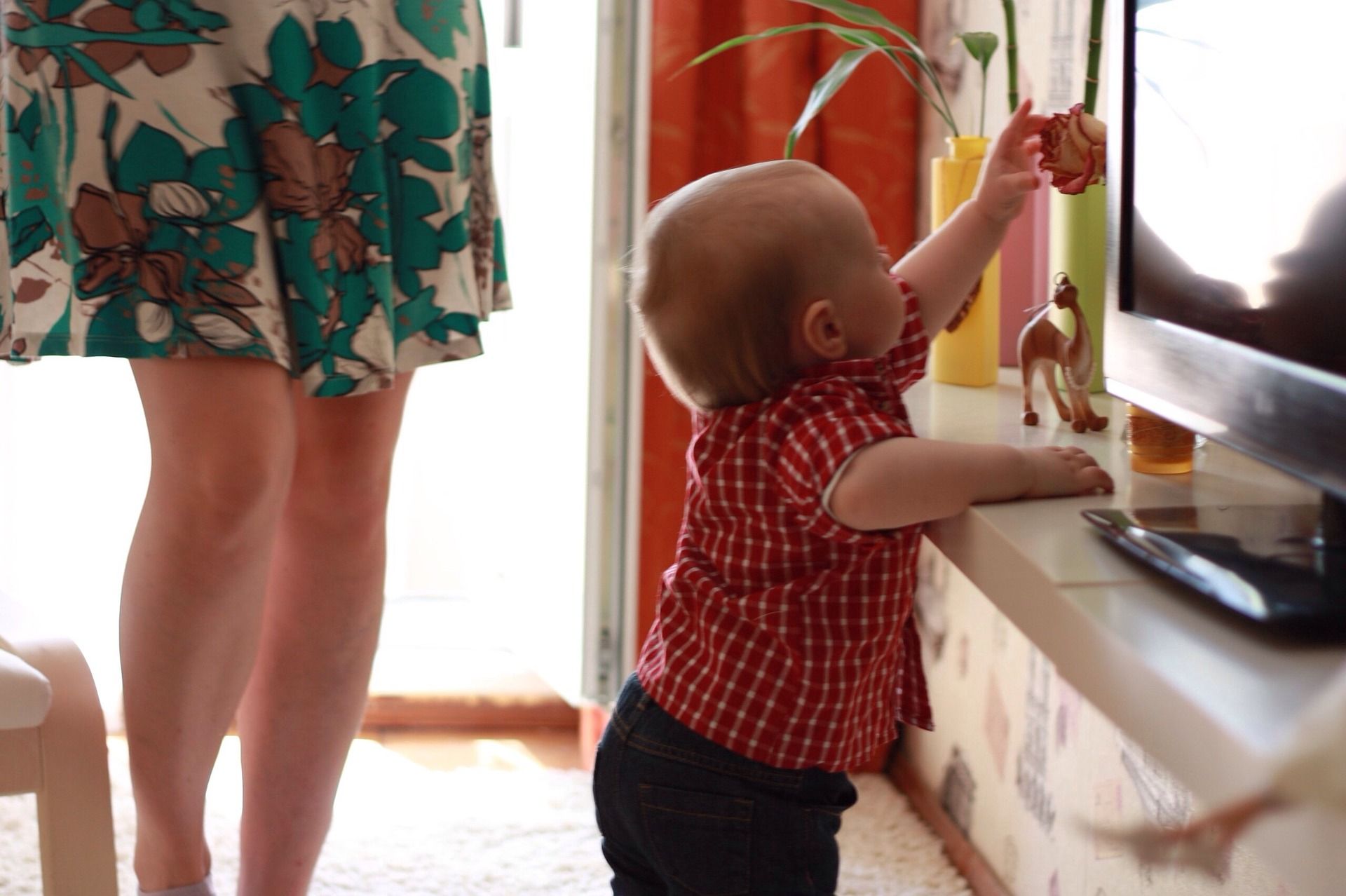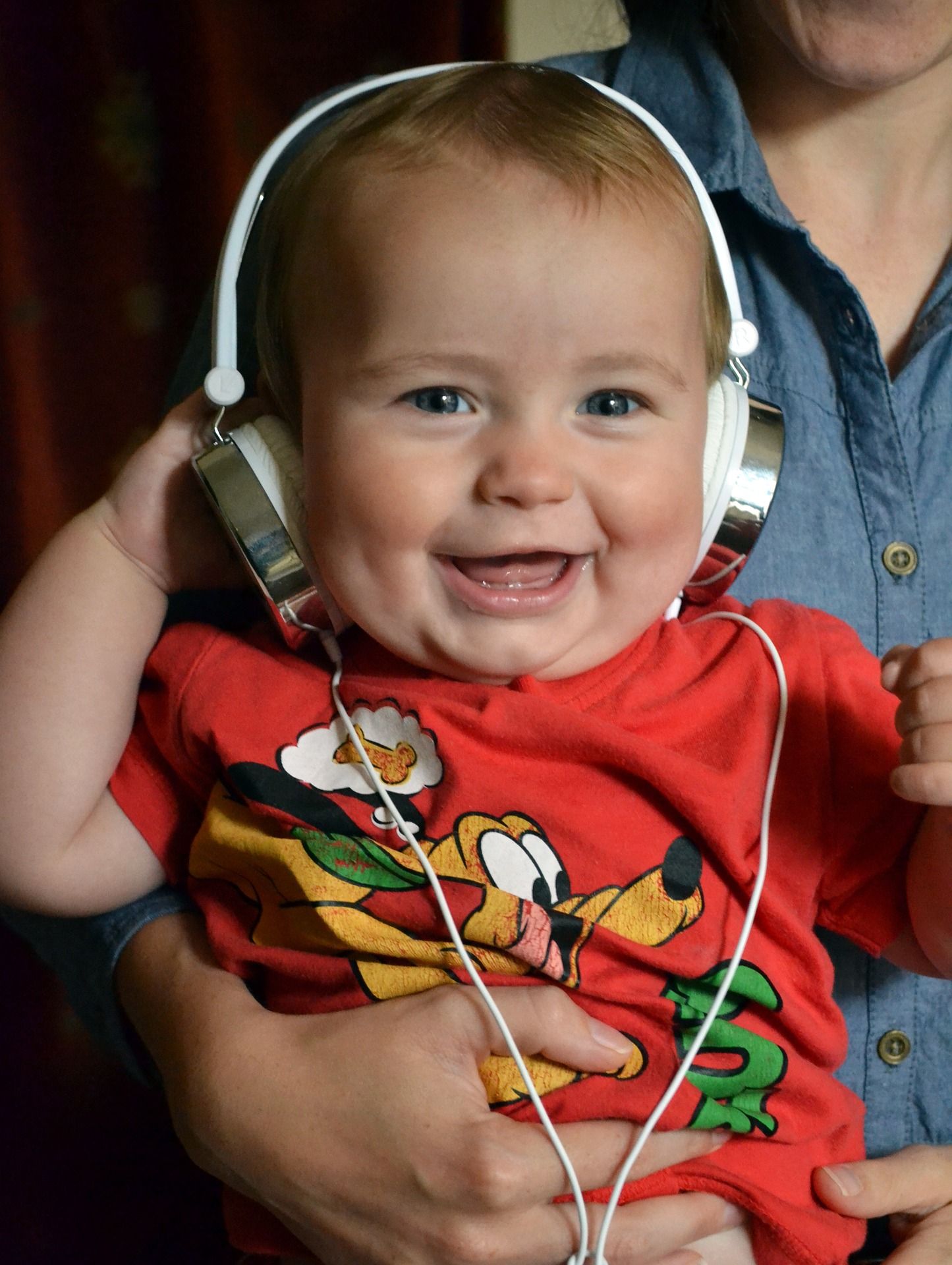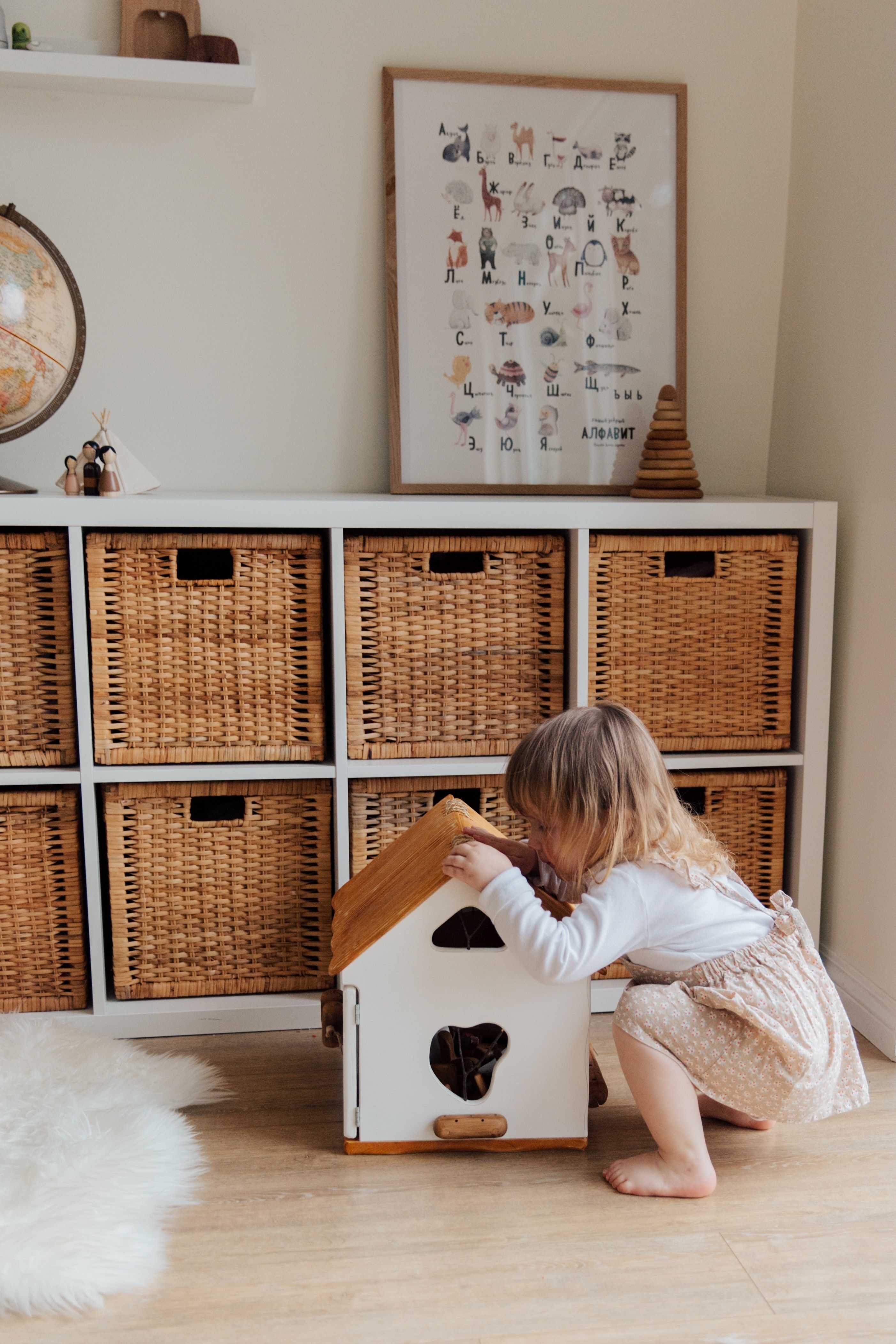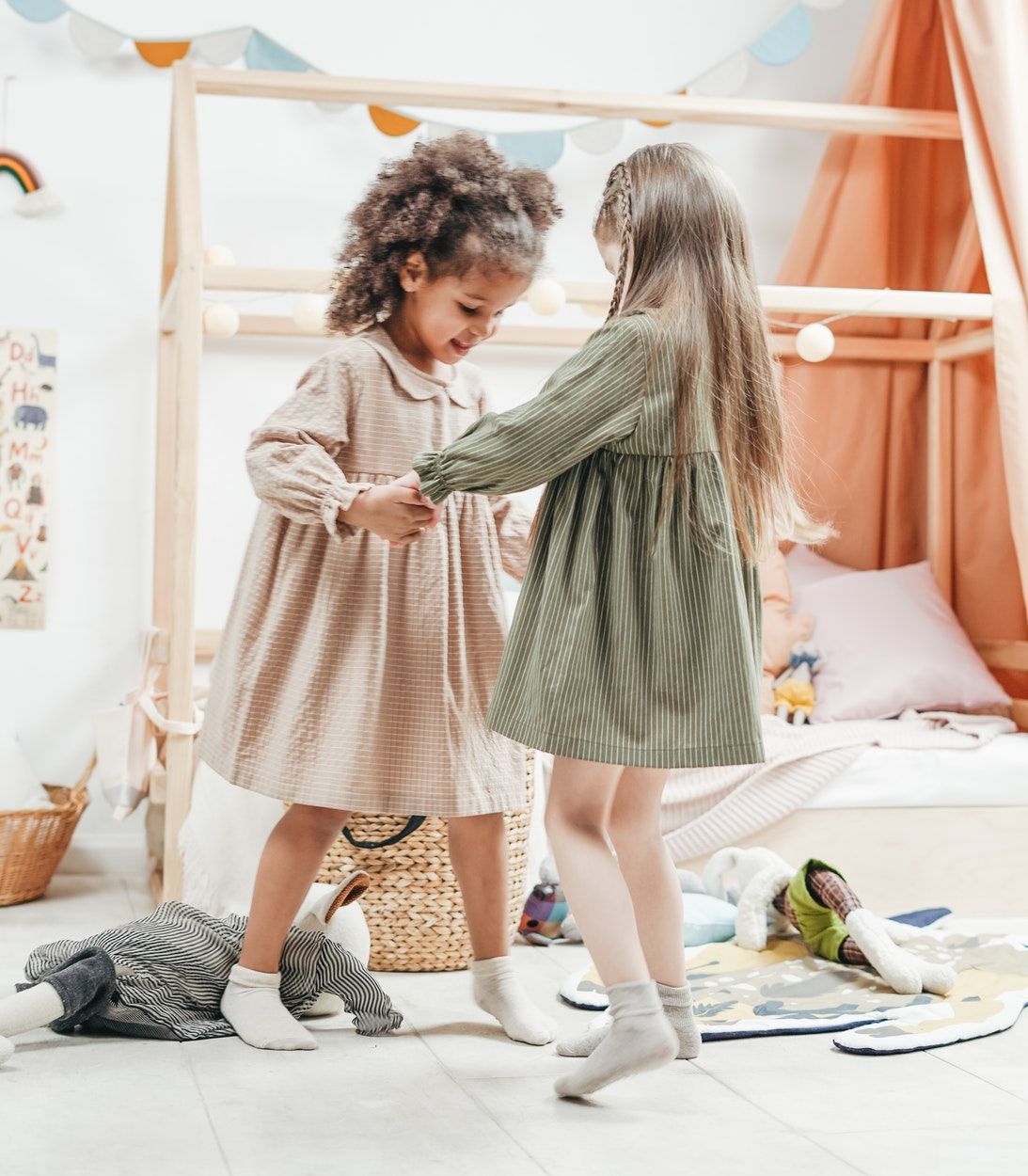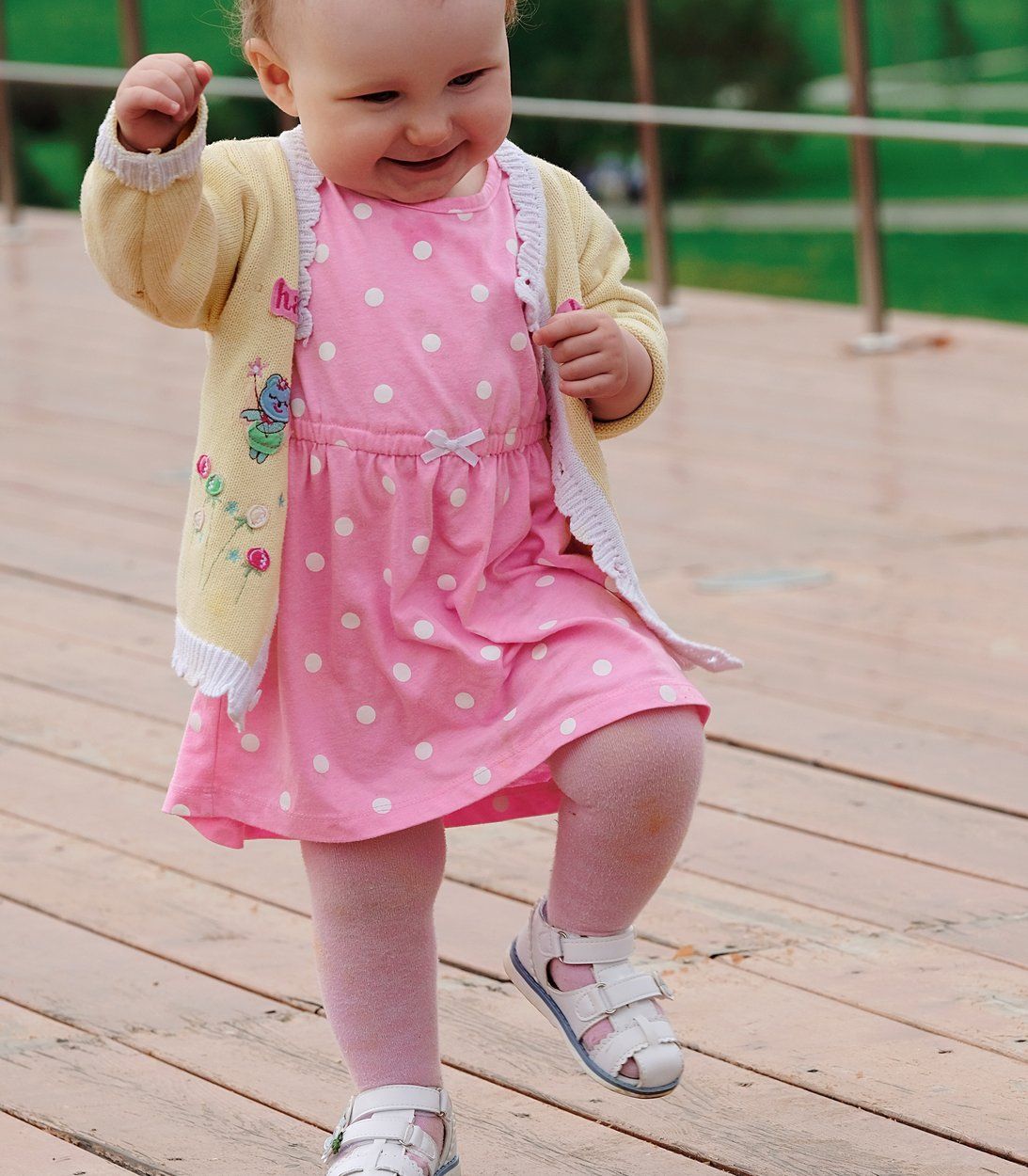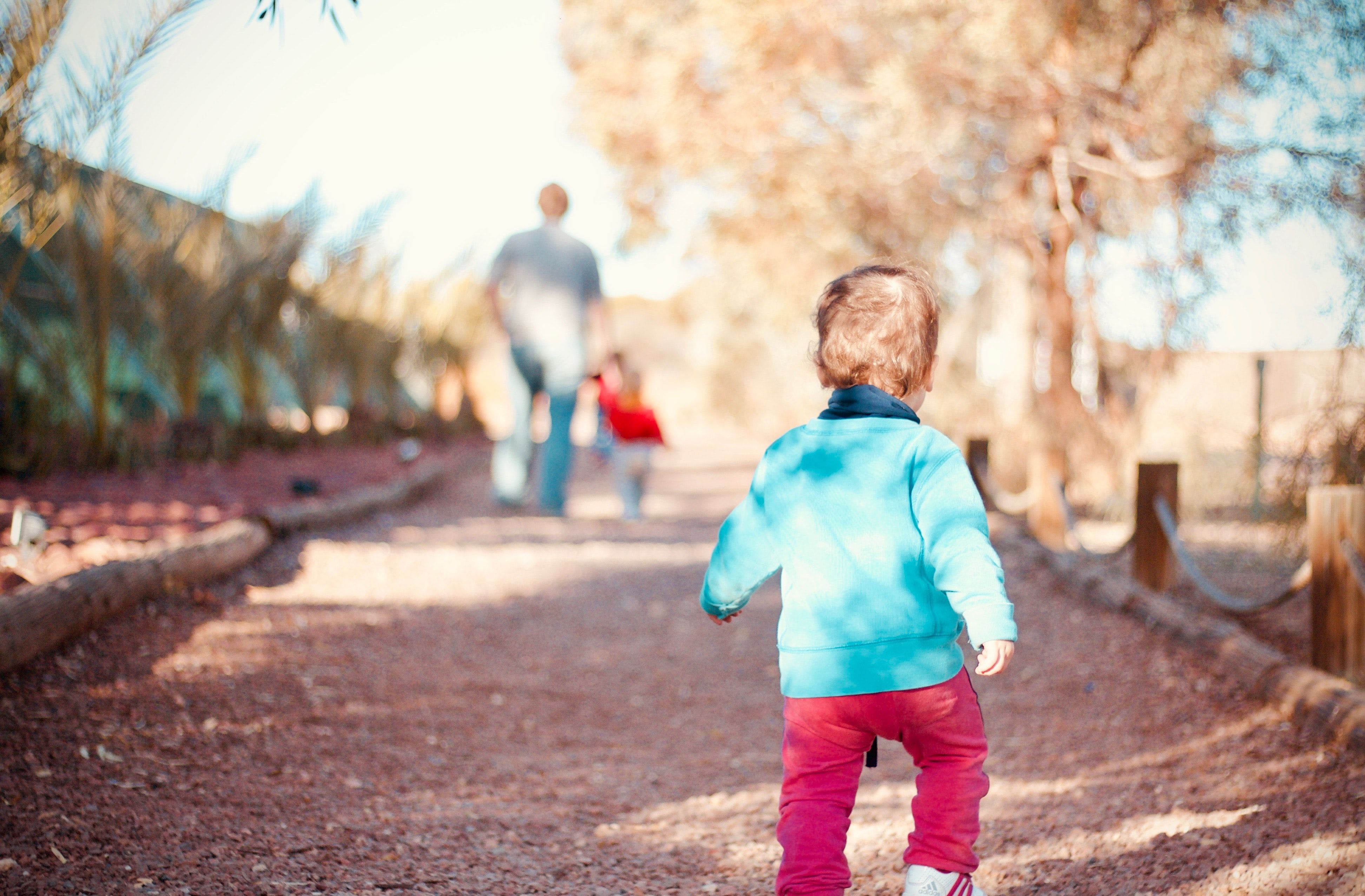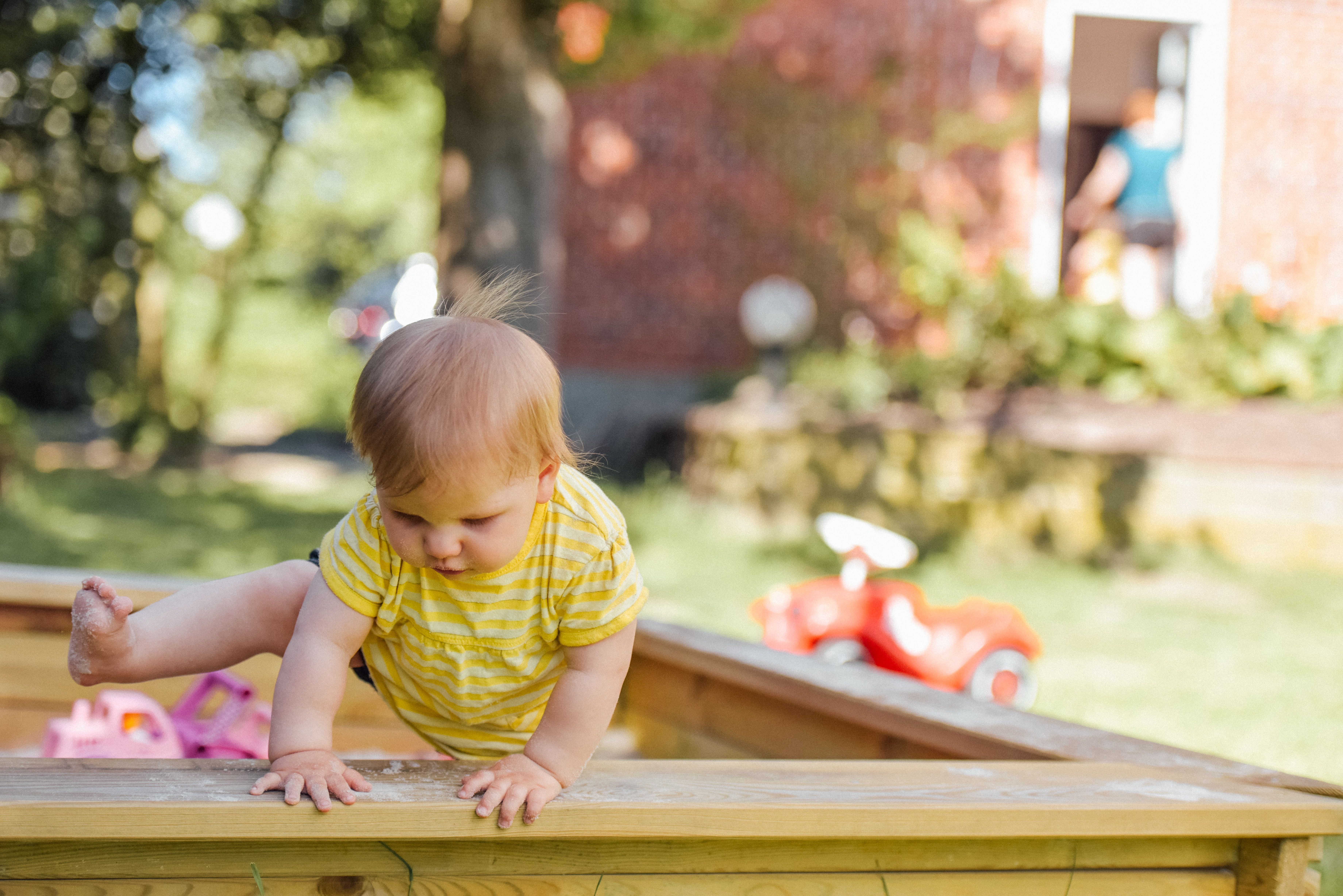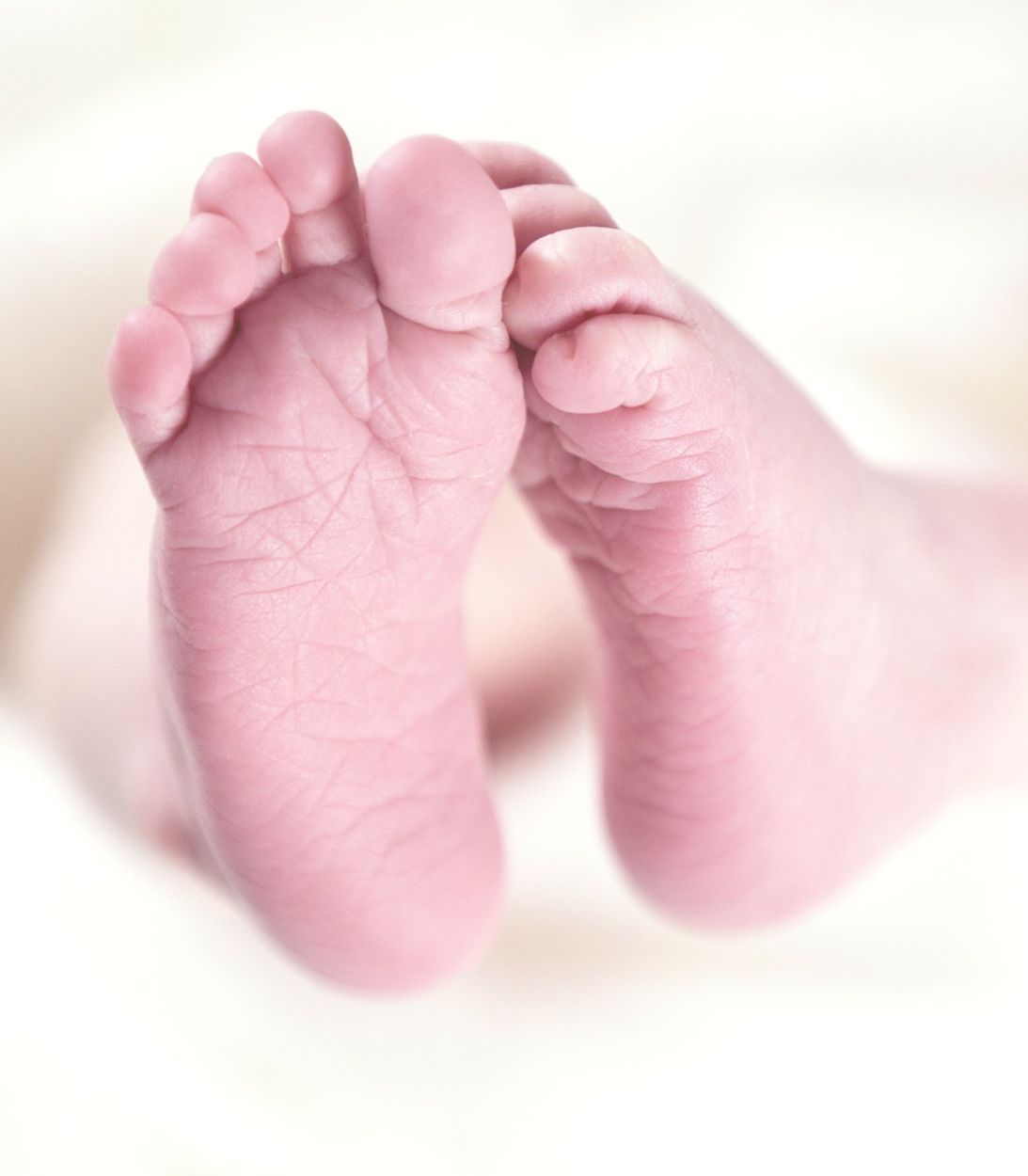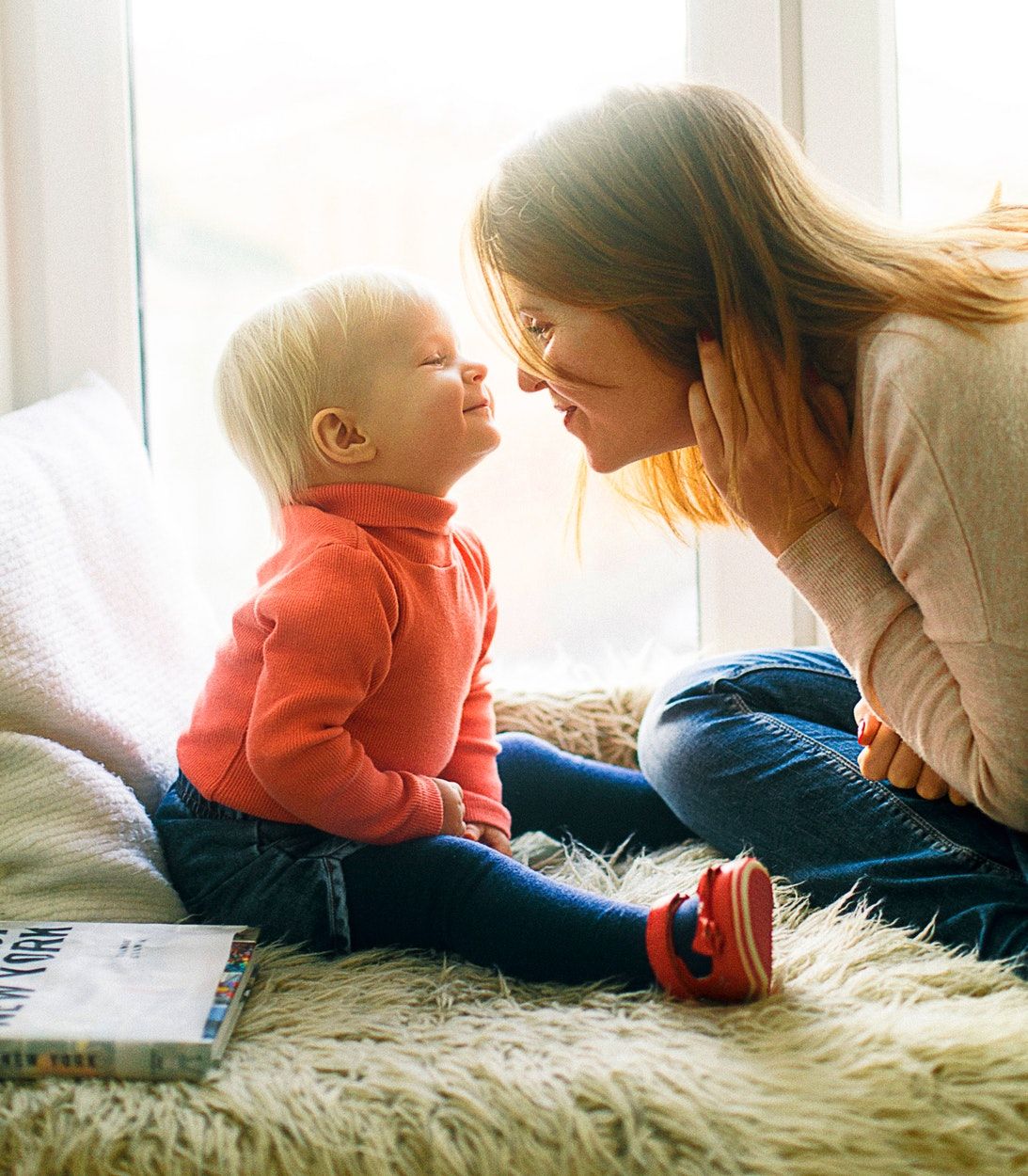This article was originally published on September 7, 2018. It was updated on January 21, 2021 by Kasey Van Dyke.
There is a tsunami of things that overcomes a mother when she finally has her baby. Once she gets the whole sleep schedule down pat and how often to feed her baby, she can kind of coast for a few months until it's time to prep baby for life outside of mommy's arms. Once a baby nails tummy time, can sit up on their own, and learns how to crawl, it's almost like we can already fast forward to their high school graduation. They're doing so much, so quickly — where is the time going? It's time to get that baby trained for walking!
There are a few things parents can do to prepare their baby for walking. From being more active to not holding them as much, to even strengthening their legs. Walking may seem like no big deal to us, but kids - especially babies and toddlers - are quite comfortable being carried around and crawling everywhere. So learning to walk isn't always a walk in the park. It can be tough. But don't worry, babies will learn to walk when they're ready (with a little help from mom and dad). Here are 15 ways to get a baby walking faster and four ways that actually may hinder them.
19 Start Early
Like anything in life, it's always best to practice, practice, practice. And this can be done by prepping your baby early on for their goal to walk. Bellamy's Organic explains, "When held upright, most babies will start to support themselves on their legs from around four to five months." Starting early is an excellent way for muscle memory, too. "Most will also bend their knees and bounce up and down a bit. This early-stage standing activity gets your baby used to standing on their feet and can start building muscle in the legs and hips."
18 Keep Them Barefoot
There are a few specialists out there who believe kids are better off barefoot. Tiny shoes are cute, but when it comes to getting your baby ready for walking, try nixing the shoes. Bellamy's Organic says, "Pediatric therapists generally recommend that you keep baby barefoot as often as possible. Babies rely on ‘feel’ to guide them and by feeling the ground they can adjust their standing balance as needed. Different surfaces require different use of joints, muscle, and posture, and when your baby can’t feel through their shoes, it hinders this learning process."
17 Sit-To-Stand Learning Walker
There are so many tools and toys out there that can assist a baby in walking. And while some parents would rather pass on the toys, the Sit-to-Stand Learning Walker by VTech seems to be one that actually helps. Care suggests "When your tot is still crawling, he can play on the floor with the removable activity panel. Then, when he's ready to ambulate, pop it back on and let him maneuver the walker on his own. Illuminated buttons, musical tones and a pretty purple phone all add to the fun — and learning."
16 Give Them Eye Candy
When someone buys me an iced latte and places it on a far table, all I can think about is grabbing that latte! I'll get up from anywhere in the house for that sweet first sip. And while babies might not be interested in iced lattes, they certainly may be interested in their favorite toys or snacks. To keep their eyes on the prize, place their favorite things just out of reach so they have no choice but to try and stand to get it.
15 Childproof It All
Teaching your baby to walk will be much easier when you know you live in a safe home. Think about how stressful it must be when teaching a baby how to walk if you still don't have locks on cabinets or padding on the edges of table corners. You'll feel much more comfortable with your baby trying to walk and exercise if you baby-proofed the entirety of the home. Be more safe than sorry and make that house baby friendly so your baby can spread their wings safely!
14 Play Music
I think one of the most adorable things to see is a baby listening to their first song. Seeing their eyes light up and their little arms move is too adorable for words. They're trying to figure out how to move to those fun beats! And as it turns out, playing music may help them walk quicker, too.
13 Teach Them To Squat
When you want to try out that new pose in yoga class, you have to work your way to achieve it. You have to become stronger and more familiar with the movements before diving into something different. The same can be said for learning to walk.
Before a baby learns to walk, they must first learn to sit up, crawl, etc., Primrose Schools furthers this by saying, "When your child is able to sit without help, have her sit on a baby-sized stool so that her back has no support. Be sure an adult is nearby to help and for safety! Her feet should be touching the floor so she can push against it," and this should help with training your baby's balance for walking.
12 Words Of Encouragement
Words of affirmation are huge in parenting. We all want to be supported by our loved ones and our babies are the same way. When your baby does the smallest of things, be sure to root them on! Your child will love the attention and the feeling of accomplishment; meaning they may keep trying to walk to make themselves and their parents proud. Just because their vocabulary isn't broad yet, doesn't mean they don't understand social cues from their parents. Get behind their goals and be their biggest cheerleader!
11 Get Them A Strong Core
Remember how I said that teaching them to squat and being supportive is a great way to build up their body (and their confidence) to start walking? Well, the same can be said for their core. We need strong cores to even ourselves out.
Mom365 encourages strong cores for babies by doing a few exercises. You can help them bounce by holding on to them or you can buy an exercise ball and have them sit on it (without their feet on the floor) while you hold them from behind.
"Holding the baby’s hips, place him sitting on the ball, facing you - only support him at the hips, so he supports his own trunk. Never letting go, gently roll the ball forward and back and then from side to side. Since you’re not holding his upper body and trunk, he’ll have to use those muscles to maintain his balance and stay upright."
10 Lead By Example
This may seem simple, but anything can help, right? Just like those mother-son and father-daughter dances in elementary school, holding a baby's arms and hands up while they try and walk is a great idea. Not only are you there to support them, but they can feel what it's like to be standing upright. Plus, they can move with their parent, making them feel confident and safe to try new things.
Tips: parents need to keep in mind that their baby's arms and legs will get tired, so be sure to take breaks and let them rest after trying this a few times.
9 Strike A Pose!
Calling all models — we need you! I'm talking about kids their own age—or a little older—who are already walking. Having another baby or kid walking around might be the motivation they've been looking for. They'll want to play with kids their own age and they can't really do that if they're sitting or crawling around. The logical next step is to learn to walk so they can keep up with all their little friends.
8 Put. The. Baby. Down.
You're so used to holding your baby everywhere, but it's time to put the baby down and let them come to you. When a baby is constantly held, they may get lazy, in a sense where they won't feel a desire to walk — they know their mom will do it for them. We all love our children dearly, so letting them gain some independence by exploring on their own is only going to help them out in the long run. Let them use their own two feet once in a while.
7 Strengthen Those Legs
I honestly thought that bouncing a baby on its legs was because they enjoyed it. They always seem to giggle and think it's hilarious to be moving up and down so many times. But, to my ignorance, bouncing a baby up and down strengthens their lower body and works on their balance. Hold their arms and hands, and assist them in learning their new favorite hobby.
6 It's Hard, But Don't Push
The Humbled Homemaker makes a great note: learning new things is tiring. Make sure to take breaks here and there.
"Most children will walk by 15 months old, and some children walk as early as 8 to 9 months old. The later the child walks, the longer the time their bones have to develop properly. Anywhere from 9 to 18 months is considered a normal age to reach this milestone. I learned the hard way that pushing my children to potty train before they were ready would backfire. You do not want to rush a child into walking before they are ready."
5 Squeak Squeak!
While learning to walk barefoot may be best for some children, others suggest wearing shoes with a small squeaker inside. Some kids prefer the comfort and support of shoes than others! The squeak, squeak, squeak noise their shoes will make might encourage them to keep moving on their feet for more squeaks. And if you can't find squeaky shoes, try tying some bells on their laces for some extra jingle-jangle. But if musically inclined shoes aren't your baby's thing, you might want to try the next suggestion below.
4 Too Many Walking Toys
"Equipment that restricts your baby's active movement can hinder walking. She must be able to practice the movements associated with walking. You can help prepare her for the first steps by limiting the use of playpens, swings, infant seats, and bouncers," Mom.Me says. All these distractions and helpers are awesome, but maybe they're too reliant on it. "Provide her with opportunities for activities that promote active movement, recommends the American Academy of Pediatrics. Examples include floor play, games, and opportunities to spend time on her tummy."
3 Slows Them Down: Too Much Furniture
After nine months of pregnancy, you probably made your home the most comfortable it could ever be. From cozy furniture to baby-proofing the entire home, your house is your castle. But perhaps you made it too hectic for your little one. Maybe there's too much furniture or too many small objects in their way.
2 Slows Them Down: Developmentally Not Ready
This may be frustrating but your baby is their own person. They're already creating their own personality — their own personal interests. And this can lead to them just not being ready to walk.
Baby Center sat down with a doctor and talked about a child not being developmentally ready. "'A child who walked late probably also sat late and crawled late – it's probably not the first missed milestone you'd notice." For this reason, your doctor will probably look at your child's walking in the context of other skills and try to figure out where he is on the continuum of motor development." Furthermore, their doctor can look at their personal development to see if they're on target
1 Slows Them Down: Not Active Enough
Do you think you have a sleepy baby? What about a lazy baby? How about a baby that enjoys cuddling more often than not? There's nothing wrong with any of these things, but perhaps your baby is simply not active enough. Maybe they're more of a chill baby who would rather coast by than try and run around. Again, it depends on the baby; everyone is different and reaches milestones at different rates. Just because other toddlers running around, ready to climb ropes, doesn't mean there's anything wrong with yours.
SOURCES: Bellamy's Organic, Care, Primrose Schools, Mom365, The Humbled Homemaker, Mom.me, Baby Center

